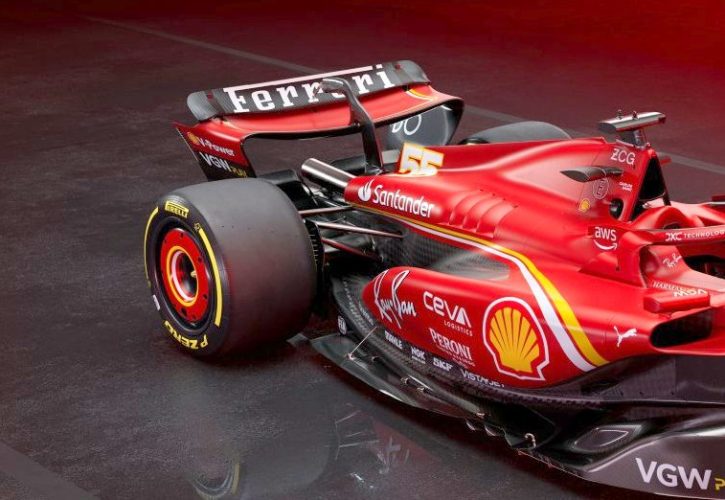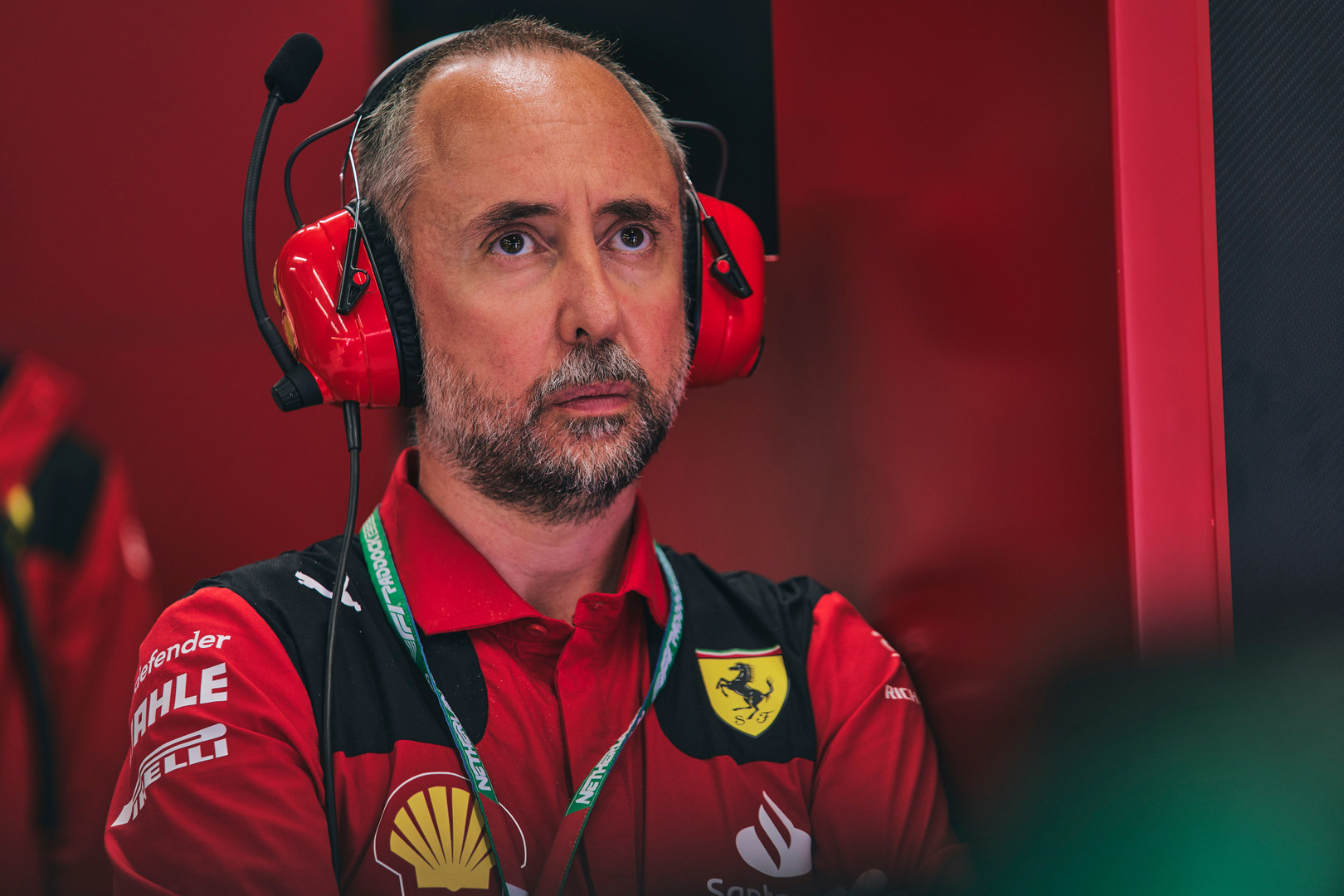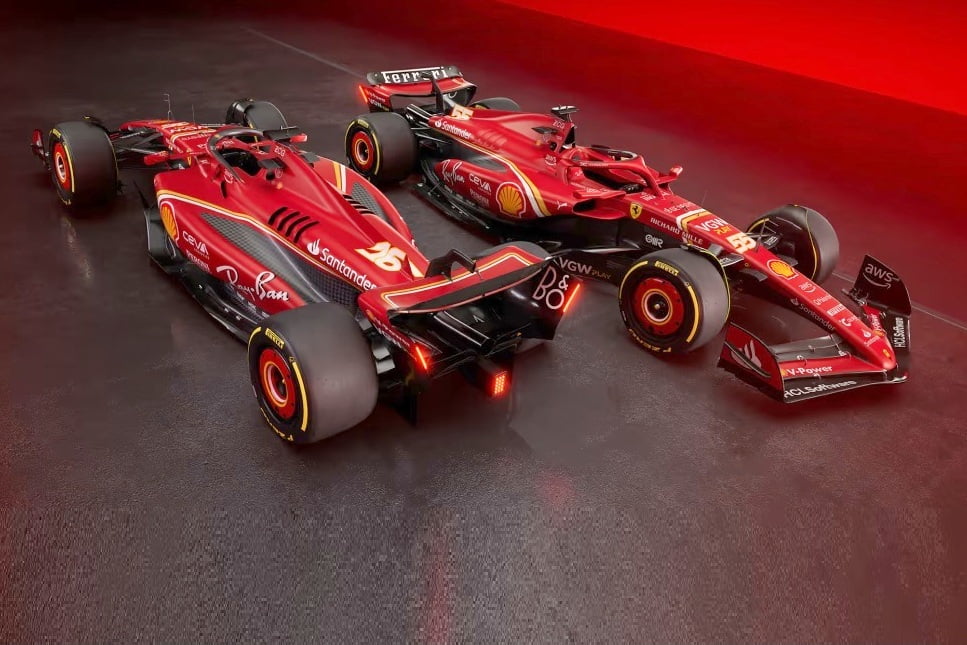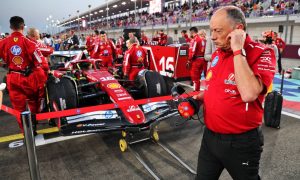
Ferrari says it has made a deliberate decision not to simply copy the push-rod rear suspension used by Red Bull for its dominant RB19, and confirmed that it has pressed on developing its own "innovative" approach for 2024.
Like most teams in the paddock, Ferrari has been spending time pouring over data and imagery of last year's Red Bull to try and determine what it was about Adrian Newey's design that made it so dominant last year.
Thy have been spending the last few months evaluating what they have found and seeing whether it has any relevance to their own chassis designs for the coming season.
In the case of Ferrari, analysis of Red Bull's pull-rod front and push-rod rear suspension has convinced the designers at Maranello that they needed to find their own direction for the SF-24 which was unveiled on Tuesday.
Ferrari technical director Enrico Cardile said that Ferrari would stick with the pull-rod suspension it has been using since the start of the current ground effect aerodynamics era.
“We tested for a couple of years a push-rod suspension," Cardile explained. “In reality, our rear suspension is a bit different in terms of top and lower wishbone distribution compared to a Red Bull one, to mention one team.
“We recorded good aero results moving towards this direction," he continued. "When moving from pull-rod to push-rod, we didn't measure a big advantage to justify some compromise in terms of weight or compliance.
"So from there we evolved our suspension, keeping the same layout," he said, adding that this was an example of Ferrari intelligently finding its own way, and not a case of ignoring a superior solution used by others.
As part of a comprehensive revamp of its chassis for 2024, Mercedes is looking to switch to a push-rod rear for its new W15 which was unveiled to the media on Wednesday.

Enrico Cardile © XPB
The push-rod rear not only helps to narrow the space needed for the gearbox, it also changes the floor shape to enable greater downforce performance at the rear, helping the car's handling on track.
Meanwhile the pull-rod front helps clear up airflow around the front tyres. Overall, the design helps deliver better aerodynamic performance and a smoother, more reliable ride.
But Ferrari believe they have find an alternative approach which allows them to stick with pull-rod suspension by reorientating how the parts are integrated into the chassis.
“The main differences compared to last year's car are on the rear, where the inboard suspension is differently located inside the gearbox," Cardile said.
“It's also a different concept, which for us at least has been an innovation because it's a different way to manage the inboard suspension compared to what we did in the past.”

©Ferrari
Camile made it clear that the team is committed to this approach in 2024 and would not be making any mid-season changes toward push-rod components regardless of how the season goes.
Images from the Ferrari launch event show that has been moved quite a bit further forward than last year.
The resulting angle means it's more closely aligned with the front leg of the lower wishbone, and set back from the front arm of the upper wishbone.
A shorter gearbox is also believed to be the reason why the chassis in this year's design is around 5cm longer, despite no equivalent change in the car's overall length.
Ferrari has already run the SF-24 in a shakedown at its Fiorano test track close to its Maranello headquarters in northern Italy, with Carlos Sainz at the wheel.
Three days of official pre-season testing with all teams taking part will take place next weekend in Bahrain, which is also the venue of the first Grand Prix of the season on March 2.
Keep up to date with all the F1 news via Facebook and Twitter







